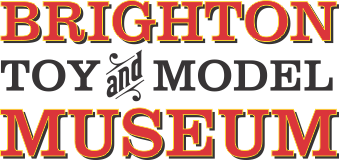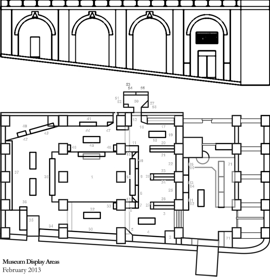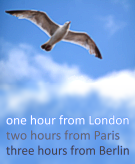Category:Prestacon Model Engineering
The short-lived Prestacon metal construction kit system (~1947-1950) was superficially similar to the better-established Juneero sets, which had been around since before WW2.
The system's patent appication was submitted in 1944 (and granted in 1946), to a Montolieu Murray Oliphant Irving (British Subject), of 32 Bellingdon Road, Chesham, Bucks.
The September 1950 issue of Meccano Magazine carried a half-page advert from Gamages (just for one month) proclaiming that they'd bought up the stock and were selling it off at half price: this presumably marked the end of the product.
Comparisons with Meccano-like systems
Advantages over Meccano
Like Juneero, the focus of Prestacon was a patented multi-purpose tool that could bend and punch metal, so that instead of buying a set of pre-punched metal strip components to build your model (like Meccano), you instead used the tool to make the specific parts that you needed. This was arguably closer to "proper" engineering and metalworking than Meccano's approach, and to make a largeish model you didn't have to buy huge sets of components, many of which you'd never need, want or use -- you could fabricate just the parts that you needed for a specific project. The results could also look more realistic, as the models wouldn't be riddled with unneccesary holes.
Disadvantages with respect to Meccano
The problem with Prestacon's approach, of only making holes where they were strictly needed, and permanently fixing the parts together, was that after having made a model the user was stuck with it: there wasn't an easy way of disassembling it to reuse the parts and make something else. If you bought a kit to make a truck, and you wanted to play with that truck, then that was fine: however, if you didn't particularly want to keep the truck after you'd made it, and wanted to play by going on to make other things, then perhaps somethong like Meccano was more sensible.
Similarities with Meccano
Some "specialist" parts that could not be realistically be made by the owner were included with the sets, including a steering wheel, some rather nice large vehicle wheels with heavy tyres, and a surprisingly thorough selection of gears.
Patent excerpt
Ths invention relates to a press suitable for finishing parts of strip or sheet material to be used as components in constructional models and for other purposes.
The said parts consist of plates and strips which are required to be perforated so that they can be goined together by rivets, or screws and nuts or self-tapping screws, and which are sometimes required to be bent into angle shape or flanged.
The main object of this invention is to provide a press tool which is capapble of piercing, bending and flanging such parts at accurately predetermined positions, and which can be used by a child or unskilled person with little risk of error.
Another object is to enable the press to perforate and bend or flange strips or sheets of material in such a manner that two or more such parts can be superimposed with perforations in the several parts on each side of the bend line accurately in alignment with each other.
Another object is to enable small variations of predetermined magnitude to be readily introduced into the spacing of perforations or into the overall dimensions of bent or flanged parts for the purpose of avoiding the need for straining the parts in course of assembly of the structure in which they are incorporated.
Another object is to provide, for use With the press, bending tools adapted to form two or three sharp bends in a strip aL bend lines spaced apart by a distance equal to the minimum pitch of perforations that the press is adapted to make.
A press according to this invention includes a worktable the surface of which is provided with at least one row of uniformly spaced holes perpendicular to a reference axis or with a first series of uniformly-spaced slots disposed side by side parallel to said axis, and with two rows of uniformly-spaced holes parallel to said axis or with a second series of uniformly-spaced slots disposed side by side perpendicular to said axis, at least two stop members, one of which is adapted to be engaged in any hole of said one row of holes or any slot of said first series of slots, and the other of which is adapted to be engaged in any corresponding two holes of said two rows or in any slot of said second series of slots, said stop members being adapted to co-operate with two adjacent straight edges of a work-piece in such a manner that, when urged towards said stop members said work-piece is prevented from rotating in its own plane and from advancing more than predetermined distances in directions perpendicular and parallel respectively to said axis, two series of reference markings on said work-table for identifying the several locations of said stop members respectively, and a head carrying a tool-holder which is capable of being reciprocated perpendicularly to said work-table. ...
External links
patents
Pages in category ‘Prestacon Model Engineering’
The following 2 pages are in this category, out of 2 total.
Media in category ‘Prestacon Model Engineering’
The following 4 files are in this category, out of 4 total.
- Prestacon lineart (MM 1950-09).jpg 2,631 × 1,889; 574 KB
- Prestacon Model Engineering, box logo, colour.jpg 1,800 × 956; 211 KB
- Prestacon, Gamages advert (MM 1950-09).jpg 1,800 × 1,339; 520 KB
- The Prestacon Press (PrestaconIB ~1947).jpg 2,000 × 1,807; 296 KB






